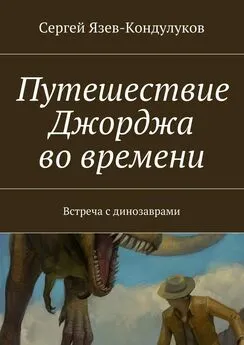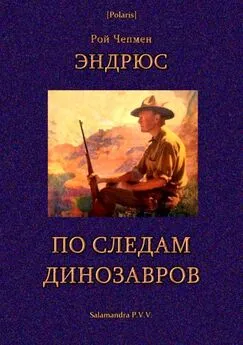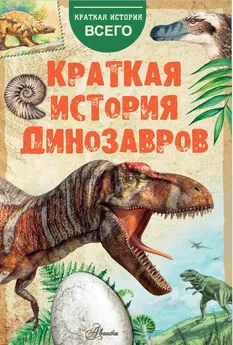Джордж Пойнар - Кто кусал динозавров?
- Название:Кто кусал динозавров?
- Автор:
- Жанр:
- Издательство:Princeton University Press
- Год:2007
- Город:Princeton, New Jersey
- ISBN:978-0-691-12431-5
- Рейтинг:
- Избранное:Добавить в избранное
-
Отзывы:
-
Ваша оценка:
Джордж Пойнар - Кто кусал динозавров? краткое содержание
В книге имеются чёрно-белые фотографии и рисунки. К сожалению, по причинам, не зависящим от переводчика книги, в ней отсутствуют упоминаемые в тексте многочисленные цветные вкладки. Может быть, когда-нибудь…
Кто кусал динозавров? - читать онлайн бесплатно полную версию (весь текст целиком)
Интервал:
Закладка:
297.Price, P. W. 2002. Species interactions and the evolution of biodiversity. pp. 3–25 in Plant-Animal Interactions, Herrera, C. M. & Pellmyr, O. (eds.). Blackwell Scientific, Oxford.
298.Raup, D. M. 1991. Extinction. Bad Genes or Bad Luck? W. W. Norton and Co., New York, 210 pp.
299.Fastovsky, D. E. & Weishampel, D. B. 1996. The Evolution and Extinction of the Dinosaurs. Cambridge University Press, Cambridge, 460 pp.
300.Johnson, C. C., & Kauffman, E. G. 1996. Maastrichtian extinction patterns of Caribbean Province rudistids. pp. 231–273 in The Cretaceous-Tertiary Mass Extinctions: Biotic and Environmental Events, MacLeod, N. & Keller, G. (eds.). W.W. Norton & Co, New York.
301.Johnson, K. R. & Hickey, L. J. 1990. Megafloral changes across the Cretaceous/Tertiary boundary in the northern Great Plains and Rocky Mountains, USA. pp. 433–444 in Global Catastrophes in Earth History, Sharpton, V. L. & Ward, P. D. (eds.). Geological Society of America special paper 247, Boulder, CO.
302.Johnson, K. R. 1993. High latitude deciduous forests and the Cretaceous-Tertiary boundary in New Zealand. Abstracts, Geological Society of America annual meeting, Boston 25: A295.
303.Stromberg, C. A. E., Thompson, A., Arens, A. & Clemens, W. A. 1998. Precursors to the Cretaceous-Tertiary boundary event: Evidence for terrestrial environmental instability. University of California Museum of Paleontology 75/125 years anniversary symposium 28 Feb. 1998, http://www.ucmp.berkeley.edu/museum/75th.
304.Fleming, R. F. 1985. Palynological observations of the Cretaceous/Tertiary boundary in the Raton Formation, New Mexico. Palynology 9: 242.
305.Nichols, D. J., Jarzen, D. M., Orth, C. S. & Oliver, P. O. 1986. Palynological and iridium anomalies at Cretaceous/Tertiary boundary, south-central Saskatchewan. Science 231: 714–717.
306.Worster, D. 1979. Dust Bowl: The Southern Plains in the 1930s. Oxford University Press, New York, 277 pp.
307.Schubert S. D., Suarez, M. J., Pegion, P. J., Koster, R. D. & Bacmeister J. T. 2004. On the cause of the 1930s Dust Bowl. Science 303: 1855–1859.
308.Miller, Jr., G. T. 1988. Environmental Science, 2nd ed., Wadsworth Publishing, Belmont, CA, 407 pp.
309.Wilson, E. O. 1992. The Diversity of Life. The Belknap Press of Harvard University Press, Cambridge, 424 pp.
310.Whalley, P. 1988. Insect evolution during the extinction of the Dinosauria. Entomologica Generalis 13: 119–124.
311.Labandiera, C. C., Johnson, K. J. & Wilf, P. 2002. Impact of the terminal Cretaceous event on plant-insect associations. Proceedings of the National Academy of Sciences 99: 2061–2066.
312.Pike, E. M. 1994. Historical changes in insect community structure as indicated by Hexapods of Upper Cretaceous Alberta (Grassy Lake) amber. The Canadian Entomologist 126: 695–702.
313.Chitwood, B. G. & Chitwood, M. B. 1950. Introduction to Nematology. University Park Press, Baltimore, 334 pp.
314.Sohlenius, B. 1980. Abundance, biomass, and contribution to energy flow by soil nematodes in soil ecosystems. Oikos 34: 186–194.
315.Yuen, P. H. 1966. The nematode fauna of the regenerated woodland and grassland of broadwalk wilderness. Nematologica 12: 195–214.
316.Malakhov, V. V. 1994. Nematodes. Smithsonian Institution Press, Washington D.C., 286 pp.
317.Andrassy, I. 1983. A Taxonomic Review of the Suborder Rhabditina (Nematoda: Secernentia). Editions de l’office de la recherché scientific et technique outré-mer, Paris, 241 pp.
318.Poinar, Jr., G. O. 1990. Taxonomy and biology of Steinernematidae and Heterorhabditidae. pp. 23–61 in Entomopathogenic Nematodes in Biological Control, Gaugler, R. & Kaya, H. K. (eds.). CRC Press, Boca Raton, FL.
319.Jenkins, W. R. & Taylor, D. P. 1967. Plant Nematology. Reinhold Publishing, New York, 270 pp.
320.Jablonski, D. 1987. Mass extinctions: New answers, new questions. pp. 43–62 in The Last Extinction, Kaufman, L. & Mallory, K. (eds.). The MIT Press, Cambridge, MA.
321.Sullivan, R. M. 1998. The many myths of dinosaur extinction: Decoupling dinosaur extinction from the asteroid impact. pp. 58–59 in The Dinofest Symposium, Wolberg, D. I., Gittis, K. Carey, L. & Raynor, A. (eds.). Academy of Natural Sciences, Philadelphia.
322.Russell, D. A. 1984. Terminal Cretaceous extinctions of large reptiles. pp 383–384 in Catastrophes and Earth History, Berggren, W. A. & Van Couvering, J. A. (eds.). Princeton University Press, Princeton, NJ.
323.Russell, D. A. 1984. The gradual decline of dinosaurs—fact or fallacy? Nature 307: 360–361.
324.Dodson, P. 1990. Ceratopsidae. pp. 494–513 in The Dinosauria, Weishampel, D. B., Dodson, P. & Osmólska, H. (eds.). University of California Press, Berkeley.
325.Fassett, J. E., Zielinski, R. A. & Budahn, J. R. 2002. Dinosaurs that did not die: Evidence for Paleocene dinosaurs in the Ojo Alamo sandstone, San Juan Basin, New Mexico. pp. 307–336 in Catastrophic Events and Mass Extinctions: Impacts and Beyond, Koeberl, C. & MacLeod, K. G. (eds.). Geological Society of America Special Paper 356, Boulder, CO.
326.Benton, M. J. 1990. Scientific methodologies in collision. The history of the study of the extinction of the dinosaurs. Evolutionary Biology 24: 371–400.
327.Desowitz, R. S. 1991. The Malaria Capers. W. W. Norton & Co., New York, 288 pp.
328.Desjeux, P. & Alva, J. 2003. Leishmania/HIV co-infections: Epidemiology in Europe. Annals of Tropical Medicine and Parasitology 97 (Suppl. 1): 3–15.
329.Boots, M. & Sasaki, A. 2002. Parasite-driven extinction in spatially explicit host-parasite systems. The American Naturalist 159: 706–713.
330.Blaustein, A. R. & Dobson, A. 2006. A message from the frogs. Nature 439: 143–144.
331.Laurence, W. F., McDonald, K. R. & Speare, R. 1996. Epidemic disease and the catastrophic decline of Australian rain forest frogs. Conservation Biology 10: 406–413.
332.Van Riper, C., van Riper, S. G., Goff, M. L. & Laird, M. 1986. The epizootiology and ecological significance of malaria on the birds of Hawaii. Ecological Monographs 56: 327–344.
333.Cunningham, A. A. & Daszak, P. 1998. Extinction of a species of land snail due to infection with a microsporidian parasite. Conservation Biology 12: 1139–1141.
334.Cunningham, A. A. 2005. A walk on the wild side—emerging wildlife diseases. British Medical Journal 331: 1214–1215.
335.Perrins, C. 1979. Birds, Their Life, Their Ways, Their World. The Reader’s Digest Association, New York, 416 pp.
336.Alvarez, L. W. 1980. Extraterrestrial cause for the Cretaceous-Tertiary extinction. Science 208: 1095–1108.
337.Poinar, Jr., G. O. & Buckley, R. 2006. Nematode (Nematoda: Mermithidae) and hairworm (Nematomorpha: Chordodidae) parasites in Early Cretaceous amber. Journal of Invertebrate Pathology 93: 36–41.
338.Poinar, Jr., G. O. & Szadziewski, R. 2006. Corethrella andersoni (Diptera: Corethrellidae), a new species from Lower Cretaceous Burmese amber. Proceedings of the Entomological Society of Washington 109: 155–159.
339.Courtillot, V. E. 1990. A volcanic eruption. Scientific American 256: 44–60.
340.Archibald, J. D. 2002. Dinosaur extinction: Changing views. pp. 99–106 in Dinosaurs: The Science Behind the Stories, Scotchmoor, J. G., Springer, D. A. & Breithaupt, B. H. (eds.). American Geological Institute, Alexandria, VA.
341.Sharpton, V. L. & Marin, L. E. 1997. The Cretaceous-Tertiary impact crater and the cosmic projectile that produced it. Annals of the New York Academy of Sciences 822: 353–380.
342.Fastovsky, D. E., Huang, Y., Hsu, J., Martin-McNaughton, J., Sheehan, P. M. & Weishampel, D. B. 2004. Shape of Mesozoic dinosaur richness. Geology 32: 877–880.
343.Archibald, J. D. 1996. Dinosaur Extinction and the End of an Era: What the Fossils Say. Columbia University Press, New York, 237 pp.
344.Poinar, Jr., G. O., Lambert, J. B. & Wu, Y. 2007. Araucarian source of fossiliferous Burmeses amber: Spectroscopic and anatomical evidence. Journal of the Botanical Research Institute of Texas 1: 449–455.
345.Poinar, Jr., G. O. & Buckley, R. 2007. Evidence of Mycoparasitism and Hypermycoparasitism in Early Cretaceous Amber. Mycological Research 111: 503–506.
346.Poinar, Jr., G. 2007. Early Cretaceous flagellates associated with fossil sand fly larvae in Burmese amber. Memórias do Instituto Oswaldo Cruz 102: 635–637.
347.Poinar, Jr., G. O., Kirejtshuk, A. G. & Buckley, R. 2008. Pleuroceratos burmiticus n. gen., n. sp. (Coleoptera: Silvanidae) from Early Cretaceous Burmese amber. Proceedings of the Entomological Society of Washington 110: (in press).
348.Poinar, Jr., G. O., Chambers, K. L. & Buckley, R. 2007. Eoëpigynia burmensis gen. and sp. nov., an Early Cretaceous eudicot flower (Angiospermae) in Burmese amber. Journal of the Botanical Research Institute of Texas 1: 91–96.
349.Poinar, Jr., G. O., Marshall, C. & Buckley, R. 2007. One hundred million years of chemical warfare by insects. Journal of Chemical Ecology 33: 1663–1665.
Предметный указатель
Примечание: рисунки отмечены курсивом, цветные вкладки – жирным шрифтом.
абелизавриды, 31 , 32
аллигаторы, 189;
– убитые вирусом Западного Нила, 125
– убитые грибком, 178;
аммониты, на мел-палеогеновой границе, 194
амёбная дизентерия: как фактор, влияющий на динозавров, 2
анаконды: как объект нападения слепней, 132
анкилозавры, 28, 29 , 30, 39, 45 , 147;
– в палеоцене, 198
араукариевые, 7, 13 , 32, 37, 52, 57, 59, 63, 66, 157;
– заболевания, 64, 68, 178;
– климатические предпочтения, 21–22;
– распространение в мире, 14 ;
– современные, 71;
– шишки, 15, 60;
– янтарь из них, 8, 12
арбовирусы, 176;
– распространяемые комарами, 124;
– распространяемые мокрецами, 114, 170;
– распространяемые москитами, 120
аскариды, 154;
– у динозавров, 2, 3, 16C, 16D , 147, 153, 182;
– у людей, 154. См. также желудочные черви
африканская чума лошадей, 115
бабочницы:
– в навозе динозавров, 86;
– на мёртвых телах, 88
бактерии, 3, 4, 89, 173, 174;
Читать дальшеИнтервал:
Закладка:
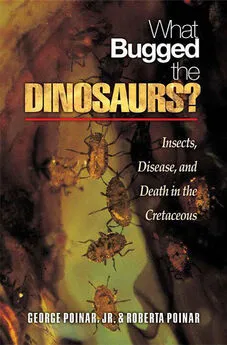

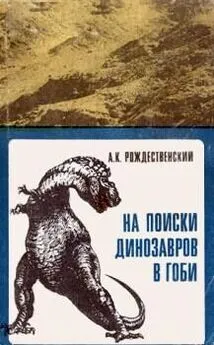
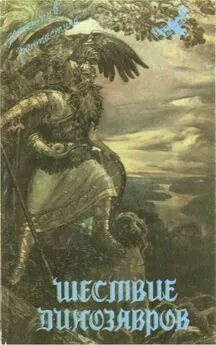
![Кейт Лаумер - Берег динозавров [Империум. Берег динозавров. Всемирный пройдоха]](/books/598305/kejt-laumer-bereg-dinozavrov-imperium-bereg-dino.webp)

